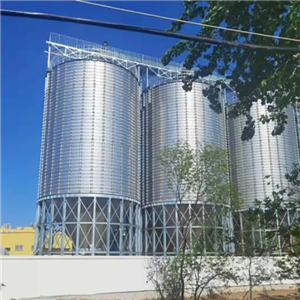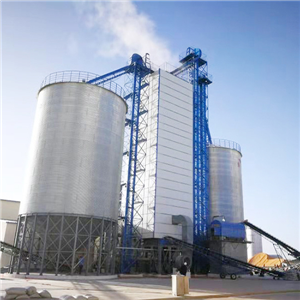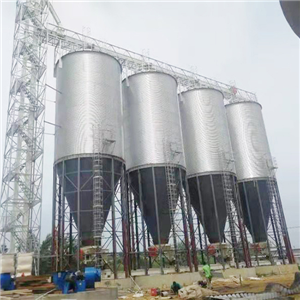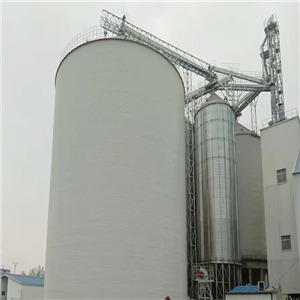Walk into any kitchen, and you’re likely to find a bag of flour tucked in the pantry—and that flour almost always comes from wheat. Think about your daily meals: the toast you had for breakfast, the pasta for lunch, the steamed buns with dinner—wheat is the invisible star behind these beloved foods. But while we eat wheat-based foods every day, how much do we really know about this versatile grain? Let’s uncover some simple yet interesting facts about wheat.

Wheat Has "Personalities"—Different Types for Different Foods
Not all wheat is the same. Just like how we choose different ingredients for different dishes, farmers grow different types of wheat based on what they’ll be used for. Each type has unique qualities that make it perfect for specific foods.
Take hard wheat as an example. It has a high protein content—especially gluten, the substance that gives dough its elasticity. This makes it ideal for making bread: when you knead hard wheat flour, the gluten forms a stretchy network that traps air, helping the bread rise and stay fluffy. You’ll also find hard wheat in pizza dough and bagels—foods that need a chewy, firm texture.
On the other hand, soft wheat has lower protein and gluten. It’s finer and lighter, which makes it great for pastries, cakes, and cookies. Soft wheat flour doesn’t rise as much, so it creates the tender, crumbly texture we love in shortbread or sponge cake. Then there’s durum wheat—a hard, golden variety. It’s milled into semolina flour, the key ingredient in pasta. Durum wheat’s tough texture holds its shape well when boiled, so your spaghetti or lasagna noodles don’t turn mushy.
Next time you pick up a loaf of bread or a box of pasta, check the label—you might spot which type of wheat it’s made from!
How Wheat Grows: From Seed to Harvest
Wheat might seem simple, but it goes through a long journey before it becomes flour. It’s a crop that loves cool weather, which is why it’s grown widely in places like North America, Europe, and parts of China.
The process starts with planting wheat seeds in the fall or spring (depending on the climate). Once the seeds sprout, they grow into green shoots that eventually turn into tall stalks with golden heads—these heads are called "wheat ears," and each ear is filled with tiny grains (the part we turn into flour). Wheat needs plenty of sunlight and just the right amount of rain: too little water, and the grains stay small; too much, and the stalks might fall over.
When the wheat ears turn a rich golden color and the grains feel hard, it’s time to harvest. Farmers use combines—large machines that cut the stalks, separate the grains from the ears, and collect the grains in bins. After harvesting, the grains are cleaned to remove dirt and chaff (the dry outer layer), then milled into flour. From seed to flour, the whole process takes about 4 to 8 months—no wonder wheat is called a "hardworking crop"!
Wheat Is Nutritious Too—More Than Just Carbs
Many people think of wheat as just a source of carbohydrates, but it’s actually packed with nutrients that keep our bodies going. Whole wheat (which uses the entire wheat grain, including the bran and germ) is especially healthy.
First, whole wheat is rich in fiber. Fiber helps keep your digestion regular and makes you feel full longer—so a slice of whole-wheat bread for breakfast can keep you from getting hungry before lunch. It also has B vitamins, which help your body turn food into energy, and minerals like iron and magnesium. Iron is important for carrying oxygen in your blood, while magnesium helps keep your muscles and nerves working well.
Even refined wheat (the white flour used in many cakes and pastries) has nutrients, though it loses some fiber and vitamins during processing. For a healthier choice, try swapping white bread or pasta for whole-wheat versions—you’ll get more nutrients without losing taste!
Liaoning Qiushi: Keeping Wheat Fresh with Professional Storage
For farmers, grain depots, and food companies that store large amounts of wheat, keeping it fresh and high-quality is a big challenge. Wheat is sensitive to moisture and pests: too much humidity can make it moldy, and pests like weevils can ruin entire batches. That’s where Liaoning Qiushi Silo Equipment Engineering Co., Ltd. (Liaoning Qiushi) comes in.
As a leading provider of grain storage solutions, Liaoning Qiushi offers customized systems to protect wheat. Their intelligent silos use sensors to monitor temperature and humidity in real time, keeping the environment j
ust right to prevent mold. For pest control, they use green technologies like nitrogen-controlled atmosphere storage—no harmful chemicals, just a safe way to keep pests away. They also have low-temperature storage systems that preserve wheat’s nutrients and freshness, even during long-term storage.
Whether you’re storing wheat grains to mill into flour or keeping processed wheat products fresh, Liaoning Qiushi’s solutions ensure your wheat stays in top condition. To learn more about our wheat storage services or discuss how we can help your business, visit our official website at www.qssilo.com or email our team at sales@qssilo.com.





